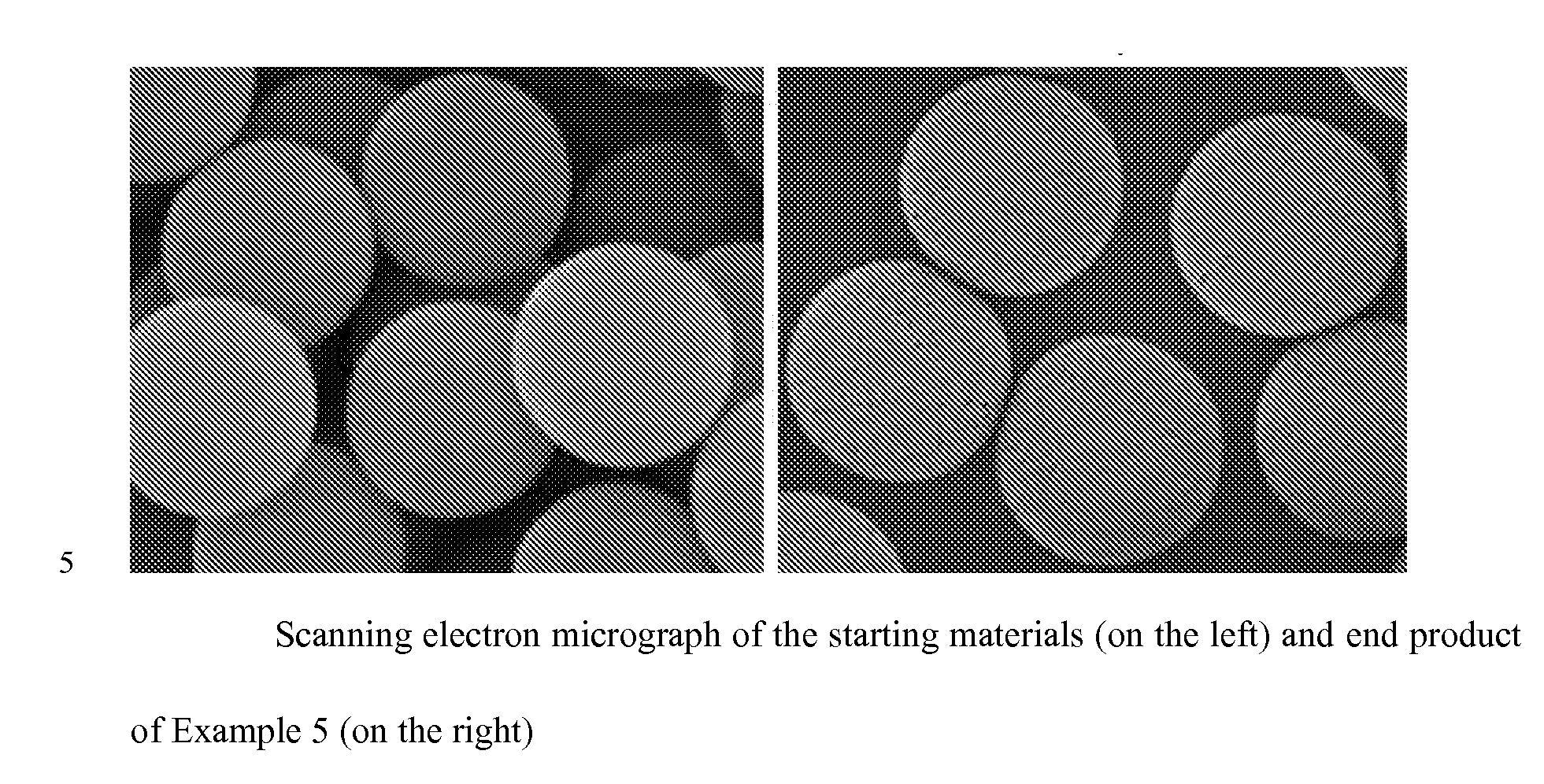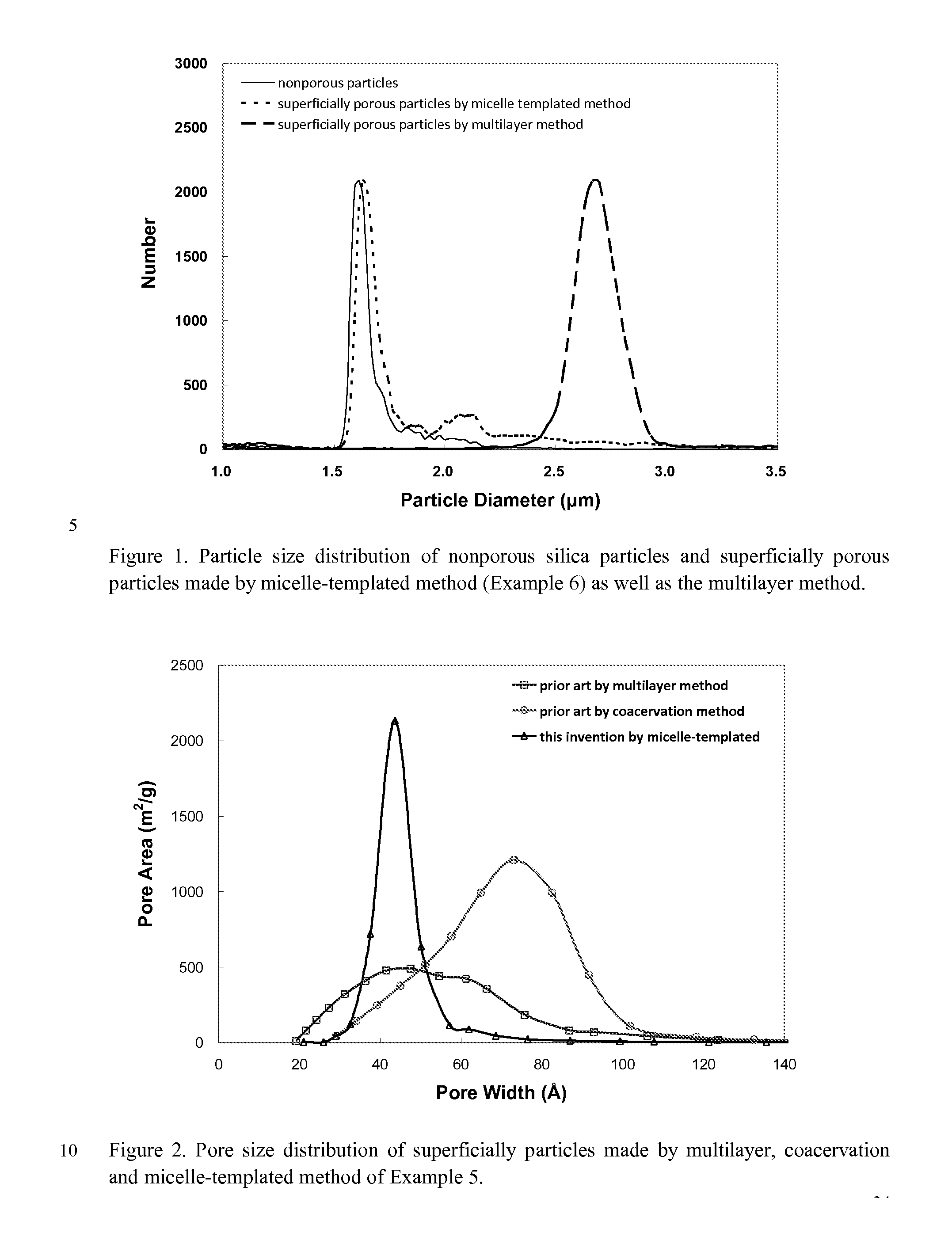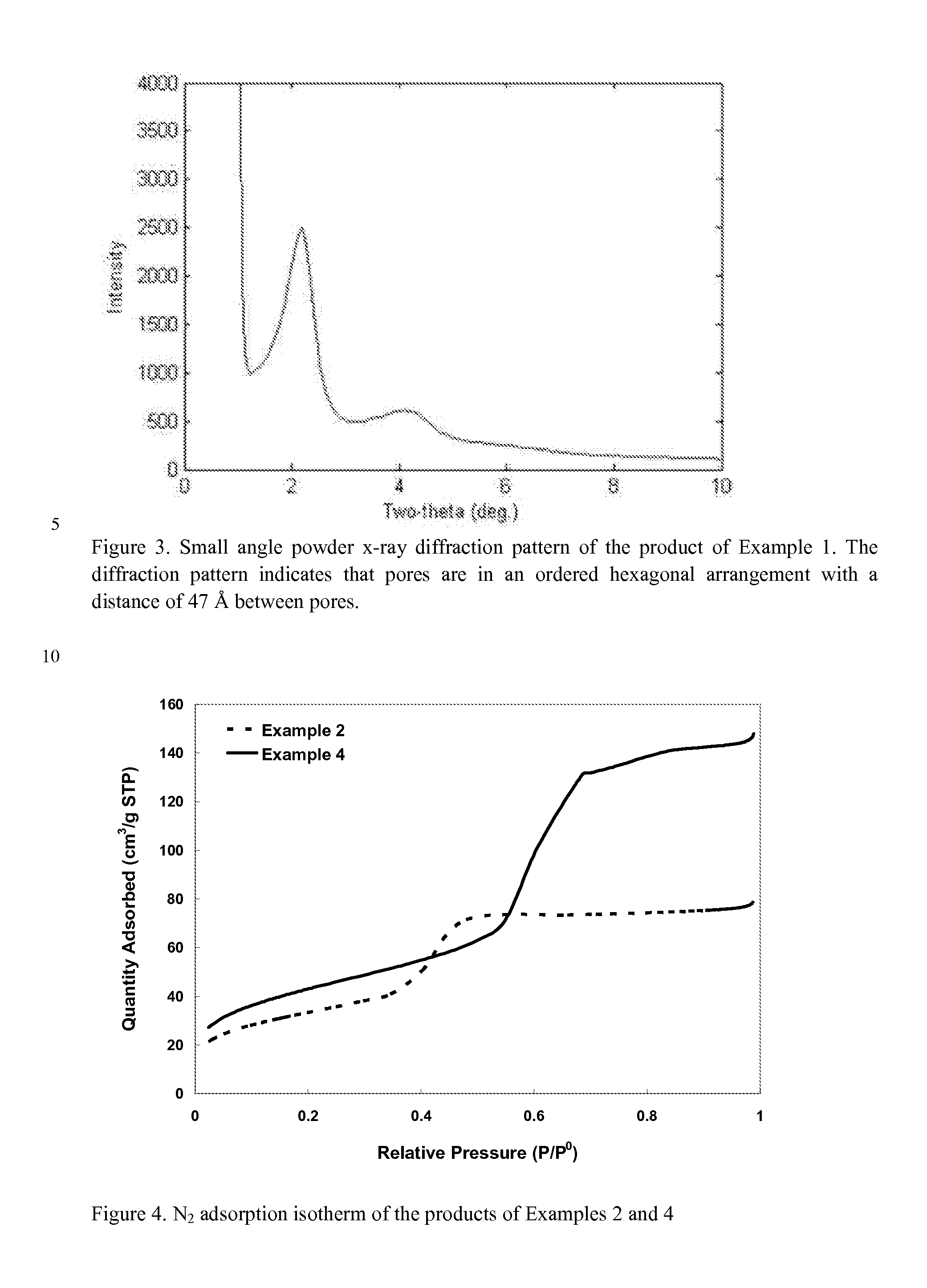Superficially Porous Metal Oxide Particles, Methods For Making Them, and Separation Devices Using Them
- Summary
- Abstract
- Description
- Claims
- Application Information
AI Technical Summary
Benefits of technology
Problems solved by technology
Method used
Image
Examples
example 1
[0074]Solid silica particles were synthesized based on U.S. Pat. No. 4,775,520. The median particle size is 2.08 μm with a distribution of 3% (one sigma). 20.8 g of the solid particles were slurried in 1593 ml deionized water in a flat bottom flask. 230 ml of 30 wt % ammonium hydroxide and 13 g of hexadecyltrimethylammonium bromide were added. The mixture was refluxed for 24 hours, and then allowed to cool to room temperature. The solution was filtered, washed with water, ethanol and acetone, and dried in a vacuum oven at 100° C. for at least 2 hours. Then the silica particles were calcined at 550° C. for 8 hours at a heating rate of 1° C. per minute. The nitrogen surface area of these particles was 384 m2 / g and the median pore size was 2.7 nm as measured by the Tristar 3000 analyzer (Micromeritics). The final particle size is 2.16 μm with a distribution of 3% (one sigma)
example 2
[0075]Solid silica particles were synthesized based on U.S. Pat. No. 4,775,520. The median particle size is 2.08 μm with a distribution of 3% (one sigma). 3.0 g of the solid particles were slurried in 200 ml deionized water in a flat bottom flask. 25 ml of 30 wt % ammonium hydroxide and 1.45 g of hexadecyltrimethylammonium bromide were added. The mixture was heated at 50° C. for 40 minutes under stirring. 0.6 g of decane was added to the previous solution and stirred for another one hour. Then the solution was refluxed for 20 hours, and then allowed to cool to room temperature. The solution was filtered, washed with water, ethanol and acetone, and dried in a vacuum oven at 100° C. for at least 2 hours. Then the silica particles were calcined at 550° C. for 8 hours at a heating rate of 1° C. per minute.
[0076]The nitrogen surface area of these particles was 119 m2 / g and the median pore size was 4.0 nm as measured by the Tristar 3000 analyzer (Micromeritics). The final particle size is...
example 3
[0077]Solid silica particles were synthesized based on U.S. Pat. No. 4,775,520. The median particle size is 2.08 μm with a distribution of 3% (one sigma). 3.0 g of the solid particles were slurried in 200 ml deionized water in a flat bottom flask. 25 ml of 30 wt % ammonia hydroxide and 1.45 g of hexadecyltrimethylammonium bromide were added. The mixture was heated at 50° C. for 40 minutes under stirring. 1.2 g of decane was added to the previous solution and stirred for another one hour. Then the solution was refluxed for 20 hours, and then allowed to cool to room temperature. The solution was filtered, washed with water, ethanol and acetone, and dried in a vacuum oven at 100°C. for at least 2 hours. Then the silica particles were calcined at 550° C. for 8 hours at a heating rate of 1° C. per minute.
[0078]The nitrogen surface area of these particles was 125 m2 / g and the median pore size was 5.0 nm with a distribution of 14% (one sigma) as measured by the Tristar 3000 analyzer (Micro...
PUM
| Property | Measurement | Unit |
|---|---|---|
| Length | aaaaa | aaaaa |
| Length | aaaaa | aaaaa |
| Fraction | aaaaa | aaaaa |
Abstract
Description
Claims
Application Information
 Login to View More
Login to View More - R&D
- Intellectual Property
- Life Sciences
- Materials
- Tech Scout
- Unparalleled Data Quality
- Higher Quality Content
- 60% Fewer Hallucinations
Browse by: Latest US Patents, China's latest patents, Technical Efficacy Thesaurus, Application Domain, Technology Topic, Popular Technical Reports.
© 2025 PatSnap. All rights reserved.Legal|Privacy policy|Modern Slavery Act Transparency Statement|Sitemap|About US| Contact US: help@patsnap.com



